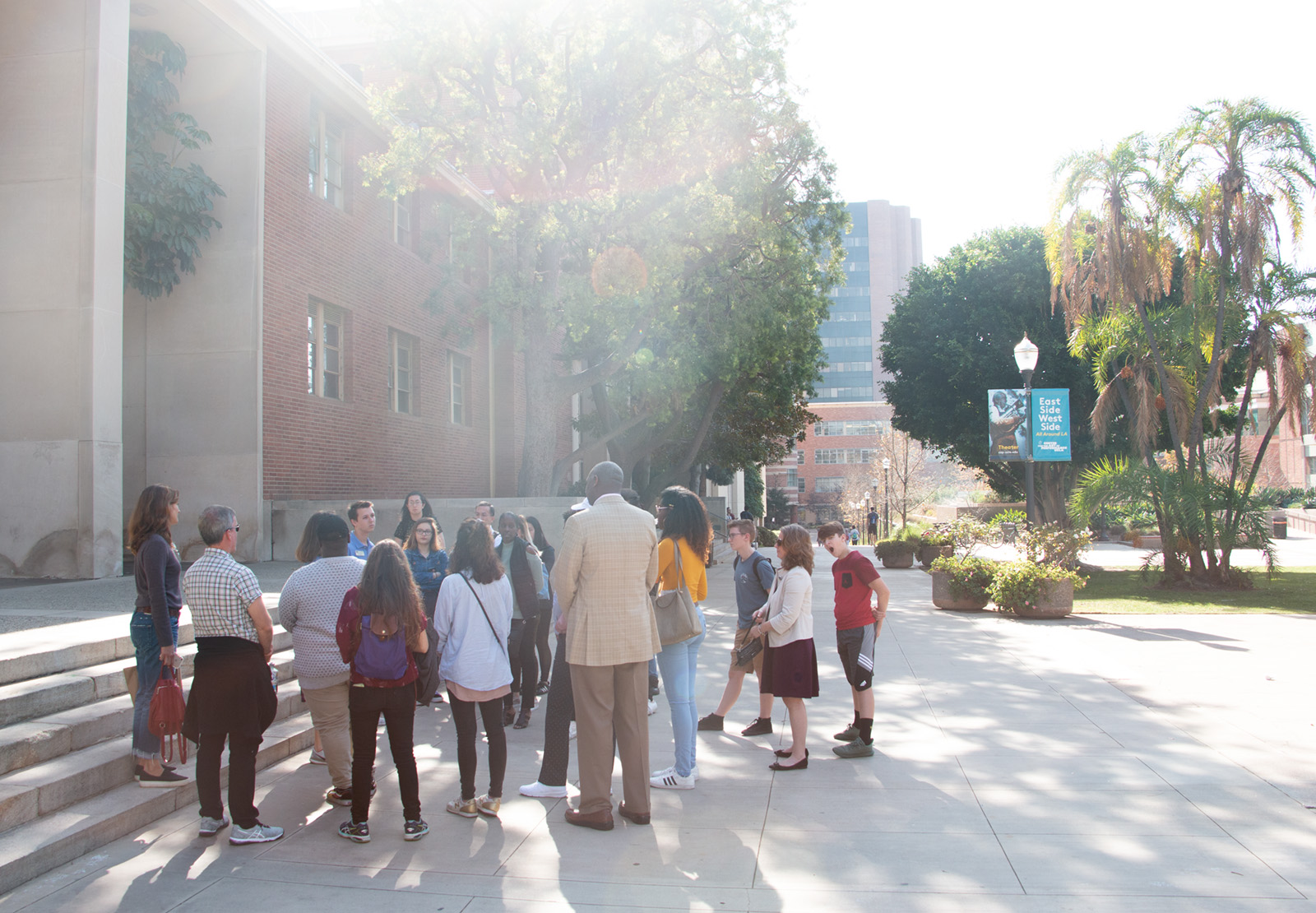Report finds out-of-state student recruitment racially, socioeconomically biased

A recent study from UCLA and the University of Arizona found decreased state funding has led universities to focus recruitment efforts on out-of-state students, particularly in wealthy and white communities. (Daily Bruin file photo)
By Kalysa To
April 22, 2019 12:27 a.m.
This post was updated April 23 at 5:04 p.m.
Public research universities focus more of their recruitment efforts on out-of-state students, according to a report from UCLA and the University of Arizona.
The study, which was published in March, investigated the recruitment strategies of 15 public research universities nationwide and found decreased state funding has caused universities to focus recruitment efforts on out-of-state students, particularly in wealthy and white communities, in order to increase revenue from out-of-state tuition.
Ozan Jaquette, an assistant professor of higher education at UCLA and one of the authors of the report, said their research found many public research universities made more recruitment visits to out-of-state students. According to the study, 12 out of the 15 universities made more out-of-state recruitment visits than in-state visits, with seven out of 15 making more than twice as many out-of-state visits.
Crystal Han, a graduate student at San Jose State University and one of the authors of the report, served as an undergraduate research assistant on the study when she was a fourth-year biology student at UCLA. Han said the increased number of out-of-state recruitment visits is caused by public research universities’ desire to generate revenue to make up for insufficient state funding.
“The main finding is that universities generally recruit heavily out-of-state and a large part of it was because out-of-state students pay higher tuition,” Han said. “So, a lot of universities rely more heavily on out-of-state (students) to generate higher tuition.”
The University of California’s nonresident enrollment cap could help prevent the UC from fixating too heavily on recruiting out-of-state students, but this fixation persists at many other public research universities, Jaquette said.
UCLA admissions did not respond in time to a request for comment.
Recruitment efforts also tend to be concentrated in wealthy and predominantly white communities, the report found.
“These out-of-state visits were focused on very affluent, predominantly white public schools and private schools,” Jaquette said. “These are the students they’re spending resources trying to get, and it’s contributing to racial and socioeconomic stratification in public flagship universities.”
The research also found that universities make less of an effort to recruit first-generation students, low-income students and black, Latinx and Native American students.
“There are a lot of students, like first-generation Latinx students that got a 4.0, took all the AP classes in their high school and they really did everything they could,” Jaquette said. “They got to their university and they were confronted with these huge cohorts of really wealthy out-of-state students who didn’t take school very seriously because that’s specifically who the universities are targeting.”
Han said public universities’ tendencies to recruit from wealthy, white communities can lead low-income students and students of color to feel more excluded from these schools.
“Students tend to feel more at home when they’re around people who are from similar background aspects, so if they only recruit from really affluent communities or white communities, some students in college might feel more isolated,” Han said.
Karina Salazar, a graduate student at the University of Arizona and one of the authors of the report, said she hopes the research can help policymakers find ways to increase low-income students’ and minority students’ access to public universities.
“We need to start thinking about, rather than changing the behavior of students, how can we get them to narrow the underachievement gap or how can we get to help students get the information they need in order to not undermatch institutions,” Salazar said. “I think a bigger question comes to how do we begin changing enrollment management and enrollment priorities in universities.”
Several students said they noticed UCLA is heavily populated by out-of-state and wealthier students.
Stella Nguyen, a first-year international development studies student, said as an international student from Vietnam, she thinks there are many affluent and out-of-state students at UCLA.
“I’ve met a lot of international students,” Nguyen said. “Most of my roommates are out-of-state as well.”
Elizabeth Gutierrez, a fourth-year political science student, said although the student population at UCLA is diverse, she thinks there are more wealthy students than low-income students.
“I don’t think (UCLA) recruitment focuses on low-income (communities),” Gutierrez said. “I’ve met a lot more wealthy people than I have lower-income (students), and lower-income (students) are usually transfers and had to go to community college first.”
Jaquette says he hopes this research can point out deficiencies in public research universities’ recruitment tactics and show their effects on higher education.
“At a fundamental level what’s happening is that the state is disinvesting in public higher education and then public flagship universities – which were founded to provide high quality education for people who couldn’t afford private, elite colleges – these public institutions are no longer valuing merit, they’re just valuing affluence,” Jaquette said.

